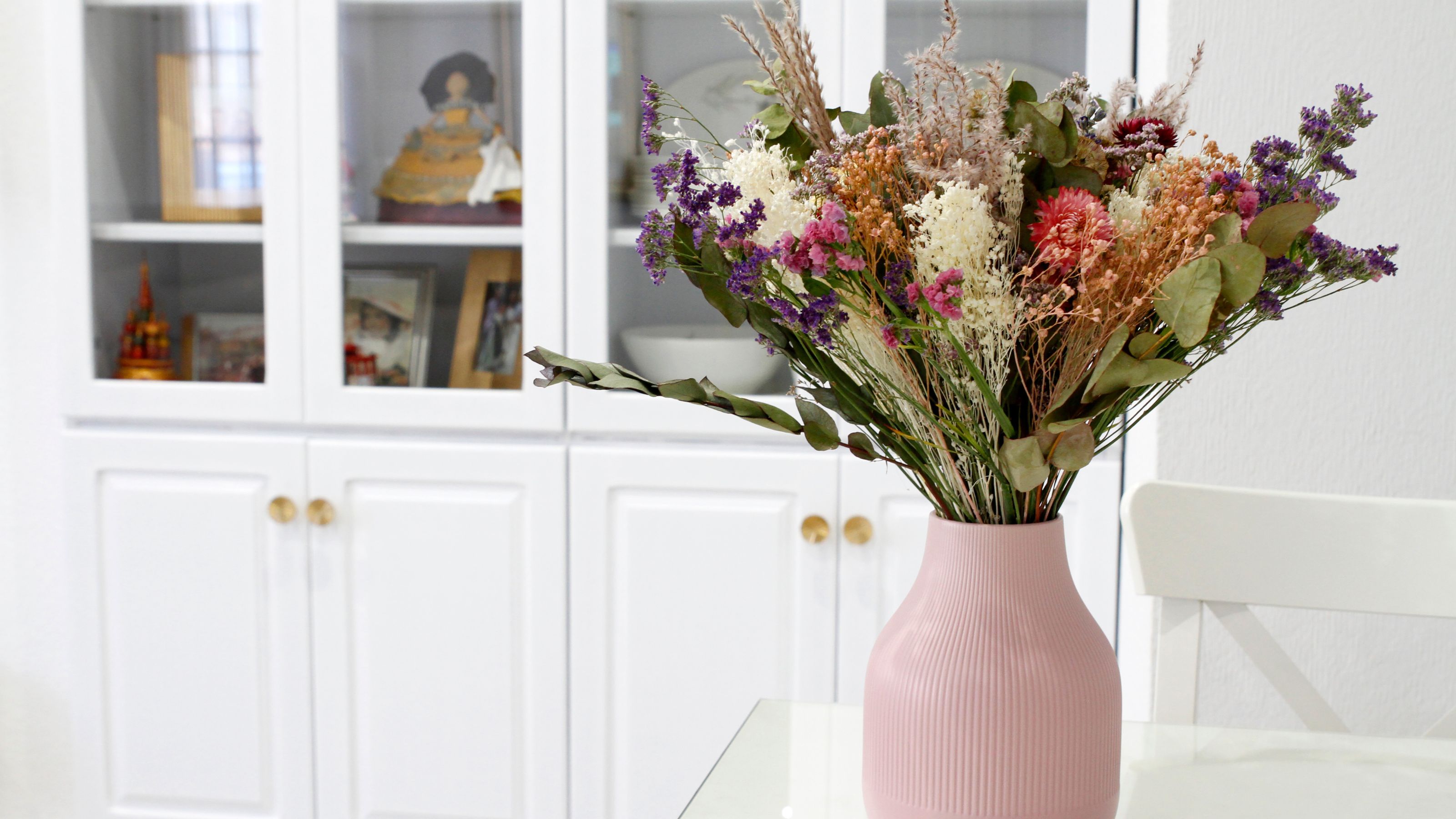How to dry flowers for natural colour all year long – plus how to do it quickly for a last-minute gift
Preserve the beauty of summer throughout the dark winter months


Learning how to dry flowers is an easy and effective way to preserve the beauty of summer. There are lots of different methods depending on what you want to achieve.
Whether you are hoping to save flowers for a special occasion or want to create sustainable and beautiful home decor, preserving flowers is a must-have skill.
‘The key to successful DIY drying is to use flower and plant material that is as fresh as possible, with minimal time lost between harvesting and the start of the drying process,’ says Carolyn Dunster, flower gardener and author of Cut & Dry: The Modern Guide to Dried Flowers from Growing to Styling.
Cut & Dry: The Modern Guide to Dried Flowers from Growing to Styling, £15, Amazon
If drying flowers looks like it might become your new favourite craft, then this book will help you take your skills to the next level!
Hang drying flowers for a dried-flower bouquet
Dried flower bouquets are all the trend at the moment, but they can be expensive to buy. For a cheaper yet just as beautiful alternative learn how to dry flowers to create a beautiful dried bouquet. All you need is somewhere to hang them upside down.
1. Pick flowers

The secret to learning how to dry flowers is picking the blooms at the right time. Pick flowers for drying on a dry day, after any morning dew has disappeared and ensure every flower has a long stem.
If you don't have lots of flowers in your garden, then consider growing a cut flower patch and include favourites such as Baby's-breath, straw flowers and poppies.
2. Hang in a dry place

Gather the flowers into small bouquets – tightly tied together with gardeners twine. These can then be hung upside down from a hook or using a flower drying rack – like this Fallen Fruits Dryer from Amazon.
Sign up to our newsletter for style inspiration, real homes, project and garden advice and shopping know-how
Opt for a dry and warm place, such as a large airing cupboard, loft, well-insulated shed or shaded part of your greenhouse ideas. Avoid direct sunlight as this will cause the bright colours to fade.
3. Create a display

Depending on the type of flowers and the climate it can take one to six weeks for your stems to dry out. Check on them regularly – they should feel rigid and rustle when you run a finger through the petals.
Once dry, you can gather them in a vase to display or use them to create a wreath or other beautiful DIY Christmas decor ideas.
Quick microwave method for scrapbooking or gifting
Producing flowers that look similar to pressed flowers but with more vibrant colours and in a fraction of the time – microwave drying flowers is one of our favourite methods.
1. Place flowers between two pieces of kitchen roll

Pick flowers with bright colours and that can easily lie flat – pansies and daisies work much better than blousy roses or dahlias. Remove as much of the stem as possible so that the flowers lie flat.
2. Weigh the flowers down with a flat, glass dish

Cover the flowers with another sheet of kitchen roll and then weigh them down with a flat, glass dish to prevent the flowers from curling and aiding with the drying. Then place it in the microwave.
With the microwave at a low setting, at thirty-second intervals – checking after each – until dry. The flowers will feel dry to the touch and paper-like. Different flowers will need different amounts of drying time.
3. Once cooled, use to decorate

Once the flowers are cooled, you can glue them in your scrapbook or bullet journal, or frame them to create a beautiful display to gift. Or you can use them to decorate other crafts, such as using them when making soap or making soy candles.
If displaying, keep the flowers out of direct sunlight to retain the vibrancy of the flowers.
Dry flowers using silica to keep their colour
While more expensive than the other methods, drying flowers in silica has become a popular option for creating everlasting blooms – especially if you want to preserve them in resin or a shadowbox.
1. Put silica gel in air tight container

Line an airtight container box with 5cm to 8cm of silica gel. Opt for a gel with a sand-like consistency – such as Wisedry Silica Gel for Drying Flowers on Amazon – as this won't crush the delicate petals when poured over them.
Always wear a mask when working with silica gel and keep away from children and pets.
2. Prepare the flowers

Remove any damaged petals that you don't want to preserve and cut off any excess leaves and branches. Aim to leave about 3 to 5cm of flower stem – these will anchor the flower in the silica.
3. Fill the container with more silica

Stand the flowers upright in the box of silica and then slowly cover the flower's core with more gel. Work outwards until every flower is covered – be careful to fill in the gaps between the petals while ensuring the flower retains its shape.
4. Reveal the dried flowers

The flowers should be dry within a few days but if you are unsure, wait a week to ensure they are completely dry. If the flowers are not fully dried – repeat steps 1 and 3 and recover the flowers.
FAQS
What are the best flowers for drying
When learning how to dry flowers, it is important to note that not every flower will be able to be dried using every method. For example, straw flowers respond very well to hang drying, while pansies are best microwaved or dried using silica.
Experiment with different flowers and different methods to find out your favourite combinations.
- Pansies – microwave or silica
- Strawflowers – hanging, microwave or silica
- Roses – hanging or silica
- Dahlias – hanging or silica
- Poppies – hanging, microwave or silica
- Grasses including Hare's tail grass and briza – hanging or silica
- Baby's-breath – hanging, microwave or silica
- Hydrangea – hanging or silica
- Lavender – hanging, microwave or silica
- Eryngium – hanging or silica
- Chrysanthemums – hanging, microwave or silica
How long do dried flowers last?
Dried flowers last between two to three years. You can extend this by keeping them out of direct light and dust-free. However, if you want to preserve them for even longer, consider setting the dried flowers in resin.

Holly is one of Ideal Home’s content editors. Starting her career in 2018 as a feature writer and sub-editor for Period Living magazine, she has continued this role also adding regular features for Country Homes & Interiors and the Ideal Home website to her roster. Holly has a passion for traditional and country-inspired interiors – especially kitchen design – and is happiest when exploring the countryside and hills of the Lake District. A keen gardener, she is a strong believer that you can never have too many houseplants.
